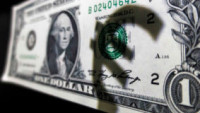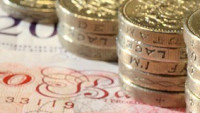 European markets underwent a choppy session yesterday, initially opening sharply lower in the wake of the Bank of Japan’s decision to relax its yield curve control criteria, before closing well off the lows of the day.
European markets underwent a choppy session yesterday, initially opening sharply lower in the wake of the Bank of Japan’s decision to relax its yield curve control criteria, before closing well off the lows of the day.
Bond yields still moved higher despite the lack of downside in stock markets as investors looked to make sense of what the Japanese central banks move might mean for financial markets next year.
Equity market reaction appears to have been tempered by the fact that this was likely to happen sometime in the New Year anyway, and the only surprise was in the timing.
Nonetheless the die has been cast, setting into a motion of train of events that makes the Bank of Japan much less of a global outlier, and points to the prospect of further tightening in rates heading into 2023.
After 4 days of losses US markets just about managed to break their losing streak, with the focus this week very much on Friday’s PCE report and US consumer spending reports for November, which has thus far held up reasonably well this year, despite declining consumer confidence.
Since moving up to a six-month high of 108.30 in September, US consumer confidence has started to soften, despite evidence that inflation is starting to come down.
The main reason for the slowdown is more than likely down to the fact that interest rate rises from the Federal Reserve are now starting to have an impact on credit costs, which in turn is hammering the US housing market, which has seen sales fall every month this year, except January.
We’re also seeing services level inflation starting to become stickier and this also appears to be affecting consumption patterns.
This pattern of higher prices is expected to see consumer confidence continue to soften below 100 to 99.9 and a four-month low.
Before that we have the latest UK public finances numbers for November. In October, public sector borrowing fell to £13.5bn, a sharp decline from September, but was still £4.4bn above the same month last year, largely due to governments latest measures to relieve energy bills for consumers, and businesses, although not all of the data was included. Consequently we could see the unaccounted costs manifest themselves in this morning’s November numbers.
Along with higher interest rates, expectations are for a modest increase to £14.8bn, with total government spending for this fiscal year expected to come in at £177bn according to the OBR.
EUR/USD – posted a potential key day reversal last week, after pushing up to 1.0735. Currently struggling at the 1.0670 area, with the onus towards the downside with support at the 1.0520 area, with further support at 1.0330/40.
GBP/USD – saw a bearish reversal on cable last week after failing at 1.2450. Still finding support at the 200-day SMA now at the 1.2080 level, and the trend line from the recent lows at 1.2050. A break below potentially opens the 1.2000 area. Currently have resistance at the 1.2280 area.
EUR/GBP – failed at the 0.8770/80 area again yesterday, with a break targeting the 0.8830 area. Support currently at the 200-day SMA with a break below 0.8540 opening up further losses towards 0.8480.
USD/JPY – plunged below the 200-day SMA at 135.70, and fallen below 132.55 which now opens up the 130.00 level. While below 132.60 opens up the potential for a move towards 126.50, which is the 50% retracement from the 2020 lows at 101.18, to the highs this year.













